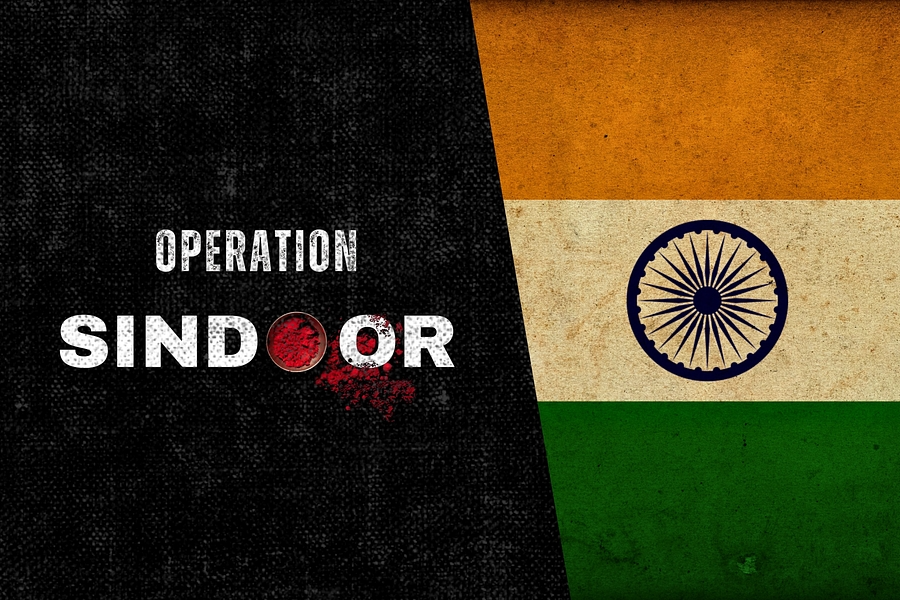August 22nd Current Affairs
Table of Contents
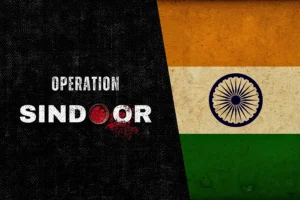
Operation Sindoor
July 21st Current Affairs Home / Operation Sindoor Why in News? Parliament’s Monsoon Session, starting July 21, 2025, is expected to feature

Alaska Earthquakes
July 21st Current Affairs Home / Alaska Earthquakes Why in News? On July 21, 2025, Alaska Peninsula was struck by

August 2, 2027 Solar Eclipse
July 21st Current Affairs Home / August 2, 2027 Solar Eclipse Why in News? A total solar eclipse is set

India’s milestone in clean energy transition
July 21st Current Affairs Home / India’s milestone in clean energy transition Why in News? India achieved a milestone by

‘Baby Grok’, child-friendly AI app
July 21st Current Affairs Home / ‘Baby Grok’, Child-friendly AI app Why in News? Elon Musk’s AI company xAI has announced
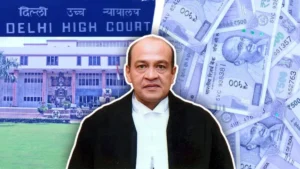
Impeachment proceedings against Justice Yashwant Verma
July 22nd Current Affairs Home / Impeachment proceedings against Justice Yashwant Verma Context On July 22, 2025, impeachment proceedings against
New policy on India's sporting engagements with Pakistan.
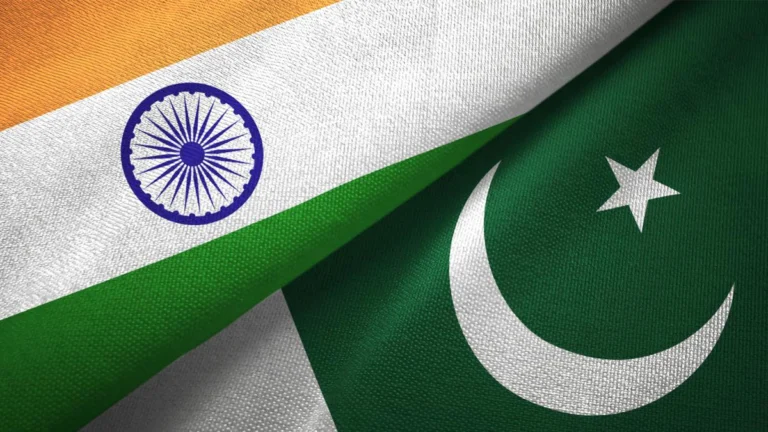
Context
India’s new policy on sports with Pakistan bans bilateral matches but permits contests in multilateral events. This decision reflects the heightened political tensions between the two nations, which have historically impacted sporting ties. The policy provides clarity on India’s stance while balancing international obligations.
Background
The policy was announced amid public debate over India playing Pakistan in events like the Asia Cup in cricket and hockey. Heightened tensions and cross-border issues have frequently led to calls for boycotting sporting engagements. The new policy formalizes a consistent approach for all sports.
Government Schemes and Policies
The government’s new sports policy explicitly states that no bilateral sporting events will take place between India and Pakistan, either in India or Pakistan. However, it makes an exception for multilateral events, allowing Indian teams and individuals to compete against Pakistani counterparts. This is also part of a larger strategy to showcase India as a reliable host for major international events like the 2036 Summer Olympics. The policy also mentions the simplification of visa processes for international sporting personnel.
Legality
The government is working to implement the new National Sports Governance Bill. This new legislation, once notified, would govern all National Sports Federations (NSFs), including the BCCI, and would override the previous Supreme Court-approved Lodha Committee recommendations on certain aspects, such as the age limit for officials. Specifically, the new Bill would allow individuals in the 70-75 age bracket to contest elections, a change from the Lodha Committee’s 70-year age cap.
Sportsmen's Views
The policy’s allowance for participation in multilateral events suggests that the interests of athletes were taken into consideration. The policy states, “we are guided by… the interest of our own sportspersons,” implying a desire not to harm their careers by restricting their participation in major international tournaments.
Significance
This policy is significant as it formalizes a nuanced approach to India-Pakistan sports relations. It allows India to maintain its diplomatic stance of not engaging in direct bilateral relations with Pakistan while avoiding a complete sporting boycott that could harm its international standing. By participating in multilateral events, India adheres to the Olympic Charter, which prohibits denying entry to athletes from any country. This approach helps project India as a responsible and viable host for future mega-events, like the Olympics, without compromising its security concerns.
Definition of Technical Terms
- Bilateral sporting contest: A match or series played directly between two countries.
- Multilateral sporting contest: An event involving multiple nations, such as a World Cup, a regional championship (like the Asia Cup), or the Olympics.
- Olympic Charter: A set of rules and principles that govern the organization and operation of the Olympic Games. It mandates that no country can be denied participation in a multi-sport event on political grounds.
Bilateral Nuances
The policy creates a clear distinction between bilateral and multilateral sporting ties. This distinction is a strategic compromise. India can express its diplomatic and security concerns by refusing to host or visit Pakistan for bilateral series, which often require extensive government clearances and security arrangements. Simultaneously, by participating in neutral-venue multilateral events, India avoids isolation on the international sporting stage and maintains its commitment to global sports governance principles.
Impacts on India-Pak
The policy formalizes the strained relationship in sports. For Pakistan, it means that bilateral cricket series, which are major revenue generators, remain off the table. It also confirms that Pakistani teams will only be able to visit India for multilateral events. This approach perpetuates the sporting freeze that has existed for years, limiting people-to-people contact through sports. It is unlikely to improve the overall political climate but provides a clear framework for sporting bodies.
Challenges
A key challenge is the interpretation and application of the policy, as mentioned by the sports ministry source who said, “we will examine the case before deciding anything” for Indian athletes traveling to Pakistan for multilateral events. This suggests potential for case-by-case decisions. Another challenge is the domestic debate it may generate, as some may call for a complete boycott regardless of the type of event.
Way Forward
The way forward involves maintaining this delicate balance. India should continue to engage in multilateral events to respect international sporting norms and give its athletes the opportunity to compete at the highest level. At the same time, the government must be firm in its policy regarding bilateral ties until the political and security situation improves. This clear framework helps all stakeholders, from sports bodies to athletes, to plan effectively. Furthermore, the push to pass the new National Sports Governance Bill is a step toward reforming sports administration in India, which is crucial for hosting large-scale events.
Prelims MCQ
Q. With reference to India's new policy on sporting engagements with Pakistan, consider the following statements: 1. The policy allows for bilateral sporting contests between the two countries, provided they are held at a neutral venue. 2. The policy permits the participation of Indian teams and players in international multilateral events that also include Pakistani teams or players. Which of the statements given above is/are correct?
A. 1 only
B. 2 only
C. Both 1 and 2
D. Neither 1 nor 2
Explanation: The correct answer is B. The policy explicitly prohibits bilateral sporting contests between India and Pakistan, regardless of the venue. Statement 1 is therefore incorrect. The policy document states, "Indian teams will not be participating in competitions in Pakistan Nor will we permit Pakistani teams to play in India" for bilateral events. Statement 2 is correct. The policy makes a clear distinction for multilateral events, stating that "Indian teams and individual players will take part in international events that also have teams or players from Pakistan. Similarly, Pakistani players and teams will be able to participate in such multilateral events hosted by India. This is a key part of the policy, allowing India to align with international sporting norms, such as those of the Olympic Charter, while maintaining its political stance. The distinction is crucial for India to position itself as a viable host for major international sporting events.
Mains Question
Q. Analyze the rationale and implications of India’s new sports policy concerning Pakistan, considering its impact on sports diplomacy, national security, and international image. (10 marks)
Lawfare Politics
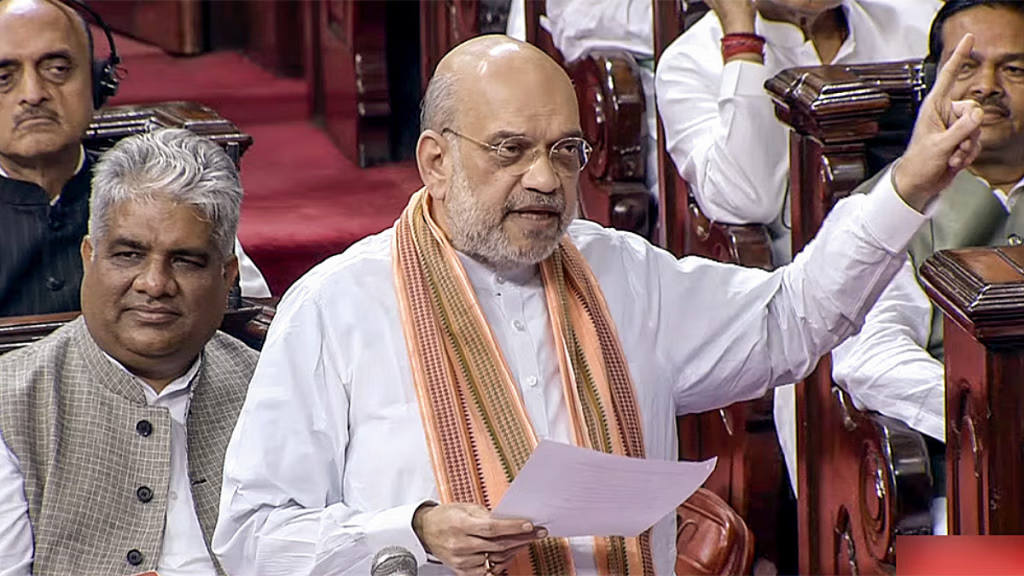
Context
The Union government’s new bills aim to remove elected officials like Chief Ministers and Ministers if they’re detained for offenses carrying a five-year or more prison sentence. Critics argue this move, which bypasses a judicial conviction, is an overreach of power and undermines federalism.
Background
The bills were introduced at the end of a parliamentary session, a move viewed as circumventing proper debate and deliberation. They come amid a backdrop of central investigative agencies, such as the Enforcement Directorate (ED) and the Central Bureau of Investigation (CBI), being accused of targeting political opponents.
Government Schemes and Policies
Three bills were introduced by the Centre, including a constitutional amendment bill. These bills, if enacted, would serve as a new legal framework aimed at ensuring political probity and accountability. The stated policy is to remove an elected official from their post upon being detained for a serious offense, with the possibility of returning to their position only after acquittal. This is a significant shift from the current system, where a judicial conviction is required for such a removal. The article suggests this policy is part of a broader push to centralize power.
Legality
The new bills potentially violate federal principles enshrined in the Constitution. The Constitution establishes a federal structure where state governments have autonomy. By allowing central agencies to remove state-level elected officials by mere detention, the Centre would be encroaching upon state sovereignty. This also challenges the principle of ‘innocent until proven guilty,’ which is a cornerstone of the Indian legal system. The article also mentions that existing laws already provide for the removal of convicted officials, implying the new bills are an unnecessary and overreaching addition. The Supreme Court has repeatedly emphasized the importance of federalism and the limited scope of central interference in state affairs. While no specific SC verdict is cited in the article, the argument aligns with the judicial principle that the police cannot be used to subvert the will of the people expressed through elections.
Political Scientists
The use of legal instruments and state power to achieve political ends. A common perspective is that the concentration of power in the hands of the central government, particularly through control of investigative agencies, erodes the checks and balances essential for a healthy democracy. The proposed bills are seen as a move that could turn India’s federal system more unitary, where the Centre holds disproportionate power over the states. This can lead to a ‘chilling effect’ on the opposition and stifle dissent.
Significance
These bills are highly significant because they represent a fundamental shift in the relationship between the Centre and the states, as well as between the state and the individual. If passed, they would grant the Centre a powerful new tool to destabilize and control opposition-led state governments. This could lead to a less vibrant democracy and a more centralized political system, contrary to the federal spirit of the Constitution. The shift from a conviction-based removal to a detention-based removal is a major erosion of civil liberties and due process.
Definition of Technical Terms
- Probity: The quality of having strong moral principles, honesty, and decency. In a political context, it refers to a leader’s integrity and accountability.
- Lawfare: The use of legal systems and institutions to undermine an opponent, usually for political or military objectives. In this context, it refers to the use of legal bills and investigative agencies to target political rivals.
- Federal Principles: The foundational ideas of a federal system of government, where power is divided between a central authority and constituent units, such as states.
- Due Process: The legal requirement that the state must respect all legal rights that are owed to a person. The new bills are criticized for violating due process by removing an elected official before they have had a fair trial.
Democratic Lens
Democracy rests on the principles of electoral mandate and rule of law. The new bills challenge both. By allowing for the removal of an elected official based on a police action rather than a judicial conviction, they arguably override the will of the people who elected that official. Furthermore, the proposals undermine the fundamental democratic principle of presumption of innocence.
Impact on Polity
The flash flood has significantly altered the local geography. The surging waters and rolling boulders have caused massive landslides and erosion, burying houses and changing the course of local streams and rivers. The debris field has made the terrain even more treacherous, impeding access for rescue teams. The incident can also trigger long-term geological instability in the region.
Challenges
A major challenge is ensuring the impartiality of law enforcement and investigative agencies. As the article points out, these agencies are under the Centre’s administrative control, which raises concerns about their neutrality. Another challenge is the difficulty in obtaining bail under existing laws like the Prevention of Money Laundering Act (PMLA) and the Unlawful Activities (Prevention) Act (UAPA), which means that a mere detention can lead to a prolonged period of imprisonment without conviction, effectively removing a minister from their post.
Way Forward
The way forward involves a thorough public and parliamentary debate on these bills. The government should address the concerns about federalism and due process. A more balanced approach would be to strengthen existing laws and institutions to ensure judicial probity without resorting to measures that could be misused for political ends. The focus should be on fair trials and timely convictions, not on circumventing them through executive action. Reforming the investigative agencies to ensure their autonomy and insulate them from political influence is also crucial.
Prelims MCQ
Q. With reference to the new bills mentioned in the article, consider the following statements: 1. The bills empower central agencies to remove a Prime Minister or Chief Minister from office based on an initial detention for a serious offense. 2. The proposals are seen as reinforcing the federal structure of India by decentralizing power to state governments. Which of the statements given above is/are correct?
A. 1 only
B. 2 only
C. Both 1 and 2
D. Neither 1 nor 2
Mains Question
Q. Critically analyze the new bills on political probity in India and their implications for federalism and civil liberties. (15 marks)
Online Gaming Bill, 2025

Context
The Promotion and Regulation of Online Gaming Bill, 2025, passed by Parliament, aims to ban “harmful” real-money gaming services. This legislative move has sent shockwaves through India’s sports ecosystem, which is heavily reliant on these platforms for sponsorship and revenue.
Background
The Indian sports ecosystem, including major leagues and the national cricket team, has become increasingly dependent on funding from real-money fantasy gaming platforms. These companies operated in a legal gray area, leading to a proliferation of businesses and concerns about their impact on public welfare and national security.
Government Schemes and Policies
The Promotion and Regulation of Online Gaming Bill, 2025, is the government’s response to the unregulated growth of the online gaming sector. The policy’s primary objective is to prohibit “harmful” real-money gaming services, citing risks such as psychological distress, financial loss, money laundering, and even terrorism financing. The government’s stance is to protect citizens and national security from the unchecked expansion of these services. This contrasts with the previous approach, which largely relied on a “game of skill” vs. “game of chance” classification, leaving much ambiguity. The new bill seeks to provide a definitive legal framework.
Constitutional Provisions
The legal status of real-money games, especially fantasy sports, has historically been ambiguous. The courts have often classified these as a “game of skill,” which differentiates them from gambling and hence makes them legal in most states. However, the new bill attempts to move beyond this distinction, citing broader concerns like consumer protection and national security. The article mentions that the gaming companies are likely to challenge the bill in court. Such a legal battle would likely involve constitutional arguments about the right to trade and business under Article 19(1)(g) of the Constitution. The government would likely defend its position under the reasonable restrictions clause of the same article, citing public order and morality as justifications.
Economic View
The sports ecosystem has become a downstream beneficiary of the “easy money” from these gaming companies. Economists might argue that while the government’s concerns about financial fraud and money laundering are valid, a blanket ban could stifle innovation and job creation in a burgeoning industry. The e-gaming federations’ letter to the Home Ministry, mentioned in the article, underscores this point, stating that the ban will be a “death knell for this legitimate, job-creating industry.” Economists might suggest that a better approach would be to implement a robust regulatory framework with strict oversight, taxation, and licensing requirements, instead of an outright prohibition.
Significance
The new bill marks a significant turning point for both the online gaming industry and the Indian sports ecosystem. It ends the era of “easy money” for sports leagues and teams, forcing them to find new revenue streams. For the gaming industry, it represents a major challenge to their business model, which is heavily dependent on the “real-money” aspect. The government’s decision to prioritize national security and public welfare over economic benefits from this sector sets a strong precedent. This could have a ripple effect on other industries with similar business models.
Definition of Technical Terms
- Real-money fantasy gaming: A type of online game where participants pay an entry fee to select a virtual team of real-life players. They win or lose money based on the real-life performance of their chosen players.
- Game of skill vs. Game of chance: A legal distinction used to determine the legality of a game. A game of skill, where the outcome is primarily dependent on the player’s knowledge and expertise, is generally legal. A game of chance, where the outcome is purely random, is typically considered gambling and is illegal in many places.
- Offshore betting companies: Companies that operate outside a country’s legal jurisdiction but target its citizens. They often use surrogate brands to advertise and circumvent local laws, as seen with companies like 1xBet.
- Money laundering: The illegal process of making large amounts of money generated by criminal activity appear to have come from a legitimate source.
Sports Lens
The sports ecosystem’s reliance on these gaming platforms created a symbiotic, yet ethically questionable, relationship. The “easy money” allowed leagues like the Indian Premier League (IPL) and Indian Super League (ISL) to flourish, but it also made them vulnerable. The sponsorships from companies like Dream11 and My11Circle were not just financial deals; they were also a form of marketing that legitimized a business that was legally ambiguous. The new bill will force sports bodies and teams to re-evaluate their sponsorship models and seek more stable and traditional sources of revenue.
Impact on Society
The bill’s impact on society is a central argument of its proponents. The government’s justification for the ban is rooted in social and security concerns. The article highlights the risks of addictive algorithms and manipulative design features that can lead to compulsive behavior and financial ruin. The link to money laundering and terrorism financing, though often a broad government concern, gives the policy a strong security justification. The bill seeks to protect vulnerable individuals from the potentially harmful effects of these games.
Challenges
The biggest challenge for the government will be the potential legal battle with the gaming companies. The industry is well-funded and will likely argue that the bill is arbitrary and violates their constitutional rights. Another challenge is the rise of a black market. A blanket ban could drive these services underground, making them even harder to regulate and monitor. The government will also need to deal with the economic fallout for the sports industry and find alternative ways to support it.
Way Forward
The way forward is not a simple ban but a comprehensive approach. The government should engage in a dialogue with industry stakeholders to create a regulatory framework that addresses its concerns while allowing the industry to grow responsibly. This could involve stringent licensing, taxation, age verification, and responsible gaming measures. Additionally, the government should explore ways to diversify the revenue streams of the sports ecosystem so it is not overly reliant on one type of business. This could include promoting traditional sponsorships, ticket sales, and merchandise.
Prelims MCQ
Q. With reference to the Online Gaming Bill, 2025, consider the following statements:
1. The bill seeks to ban all forms of online gaming, including "games of skill."
2. The government's justification for the bill includes concerns about money laundering and terrorism financing.
Which of the statements given above is/are correct?
A. 1 only
B. 2 only
C. Both 1 and 2
D. Neither 1 nor 2
Explanation: The correct answer is B. Statement 1 is incorrect. The bill is aimed at prohibiting "harmful" real-money gaming services, not all forms of online gaming. The distinction between "game of skill" and "game of chance" has been central to the legal debate, and the bill focuses on the negative consequences of "real-money" games, not the skill aspect itself. Statement 2 is correct. The government cited "risks of psychological distress, financial loss, money laundering and even financing of terrorism" as reasons to prohibit these services. This justification is a key part of the government's argument for the new legislation.
Mains Question
Q. Critically analyze the economic and social implications of the Online Gaming Bill, 2025, on India’s sports ecosystem and the wider society. (15 marks)
Kerala's Digital Literacy Milestone
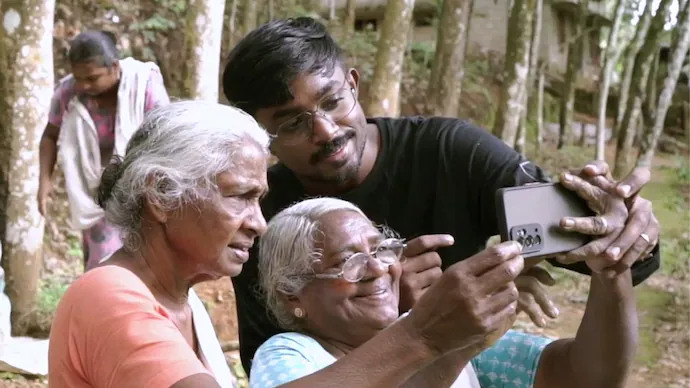
Context
Kerala has officially become the first state in India to achieve total digital literacy through its Digi Kerala program. This landmark accomplishment follows its prior success in achieving 100% literacy, demonstrating the state’s continued commitment to social development and bridging the digital divide.
Background
The Digi Kerala program began as a grassroots initiative in Pullampara panchayat in 2021 to assist residents, particularly MGNREGS workers, with simple digital tasks like checking bank balances. Its success prompted the state government to scale it up statewide, utilizing a massive volunteer network to train over 21 lakh citizens.
Government Schemes and Policies
Kerala’s achievement is the result of a coordinated policy effort. The Digi Kerala program is a state-level initiative that expands upon the earlier Digi Pullampara pilot project. It aims to empower citizens by making them proficient in using smartphones for daily activities, a shift from the national focus on computer literacy. This program is part of a larger government vision that includes the Kerala Fibre Optic Network (KFON) project, which aims to provide free internet access to 20 lakh Below Poverty Line (BPL) families, and the K-Smart project, designed to provide all local government services digitally. The state government has also declared internet access a basic right.
Constitutional Provisions
While the article does not mention specific constitutional provisions or Supreme Court verdicts, the initiative aligns with the spirit of the Right to Education and the Right to Information, which are essential for a citizen’s empowerment. Access to information in the digital age is increasingly seen as a fundamental aspect of these rights. The declaration of internet access as a basic right by the Kerala government in 2019 is a proactive policy measure that seeks to guarantee citizens’ access to digital tools and information, a move that could potentially be used as a legal precedent to argue for digital inclusion as a fundamental right.
Sociological Lens
From a sociological perspective, this achievement is significant for promoting social equity and inclusion. Sociologists would view this as a powerful tool for empowering marginalized groups, particularly the elderly, women, and the poor, who are often left behind in the digital revolution. The Digi Kerala project’s focus on a grassroots approach, using a volunteer network and local self-government bodies, demonstrates a bottom-up social change model. It bridges the digital divide, reducing inequalities and enabling better access to social services, financial inclusion, and opportunities for skill development, as illustrated by the farmer who learned new techniques from YouTube.
Significance
Kerala’s digital literacy milestone is a model for other states to follow. It shows that digital transformation can be inclusive and people-centric, not just a top-down technological rollout. The program’s success is rooted in its decentralized, community-led approach and its focus on practical, everyday skills. This achievement enhances the state’s human capital, improves citizens’ ability to access government services, and fosters a more informed and connected society. The state’s efforts to ensure internet as a basic right through projects like KFON further solidify its position as a pioneer in digital governance and social welfare.
Definition of Technical Terms
- Digital Literacy: The ability to find, evaluate, create, and communicate information using digital technology. In this context, it refers to the basic proficiency in using a smartphone for everyday tasks like bill payments and video calls.
- MGNREGS: Mahatma Gandhi National Rural Employment Guarantee Scheme, a government program that guarantees the right to work for rural households. The article mentions its workers were a key target group for the training.
- Kudumbashree: A poverty eradication and women empowerment program in Kerala, which played a crucial role in mobilizing volunteers for the survey and training.
- KFON: Kerala Fibre Optic Network, a government project aimed at providing universal and affordable internet access throughout the state, bridging the digital divide.
Technological Perspective
The program’s success hinges on a crucial technological pivot: instead of focusing on traditional computer literacy, it prioritizes smartphone proficiency. This approach is practical and scalable, given the widespread use of smartphones and their accessibility. The training modules were designed to be simple and user-friendly, covering essential tasks like using WhatsApp, YouTube, and mobile payment apps. The use of YouTube for skill learning, as shown by the farmer, highlights the transformative potential of basic digital literacy. The K-Smart project, an all-in-one digital platform for local government services, fits perfectly into this ecosystem by providing the digital services that newly literate citizens can now access.
Impact on Society
The Digi Kerala initiative has a multifaceted impact on society. It empowers individuals, particularly women and the elderly, by giving them more control over their financial and personal lives. The ability to check bank balances, pay bills, and communicate with family abroad via video calls reduces dependency on others and enhances autonomy. It also promotes civic engagement by enabling people to access government services directly. The project has the potential to reduce the social isolation of the elderly and increase their participation in the digital economy.
Challenges
A key challenge was ensuring full mobile network coverage, particularly in the hilly, rural parts of the state. The article highlights how this was overcome with the installation of new mobile towers, but it underscores the ongoing need for robust digital infrastructure. Another challenge was convincing reluctant senior citizens to adopt new technology. The use of volunteers to explain the benefits, such as connecting with grandchildren, was crucial in overcoming this hurdle. The project’s critics point to the survey not covering all houses, but officials argue that local knowledge was used to avoid redundancy.
Way Forward
The state government’s plan for Digi Kerala 2.0 shows the way forward. The next phase will focus on advanced skills, including accessing government services, cyber fraud awareness, and combating fake news. This is crucial for creating responsible digital citizens and ensuring that digital literacy translates into real-world benefits and protection. The integration of digital literacy with projects like KFON and K-Smart will create a comprehensive digital ecosystem, ensuring that citizens not only have the skills but also the infrastructure and services to use them effectively.
Prelims MCQ
Q. With reference to Kerala's digital literacy campaign, consider the following statements:
1. The campaign exclusively focused on imparting computer literacy to citizens.
2. The project was launched after the state government had declared internet access a basic right.
3. The training modules were vetted by a technical university to ensure their quality.
Which of the statements given above is/are correct?
A. 1 and 2 only
B. 2 and 3 only
C. 3 only
D. 1, 2 and 3
Explanation: The correct answer is B. Statement 1 is incorrect. The program was "tweaked to make people proficient in using smartphones" rather than focusing on computer literacy. Statement 2 is correct, The government declared internet access a basic right on November 7, 2019, while the pilot project for the digital literacy campaign started in 2021. Statement 3 is also correct. The training modules were "vetted by APJ Abdul Kalam Technological University," a detail that underscores the official and structured nature of the training.
Mains Question
Q. Examine how Kerala’s digital literacy campaign can serve as a model for other states to achieve inclusive social development and e-governance. (10 marks)
RBI's Monetary Policy Review
Context
The RBI’s discussion paper warns that raising India’s inflation target above 4% could damage its monetary policy credibility and erode gains made in fiscal stability. This comes as the current inflation targeting framework, which has a 4% target with a 2-6% band, is up for review.
Background
India formally adopted the flexible inflation targeting framework in late 2016. The policy sets a medium-term target of 4% based on the Consumer Price Index (CPI), with a tolerance band of 2-6%. This framework is reviewed every five years, and the current target is valid until March 2026.
Schemes and Policies
The RBI’s discussion paper is a crucial part of the review process for the flexible inflation targeting (FIT) framework, a policy mechanism formally adopted in an agreement between the Government of India and the Reserve Bank of India. The policy’s goal is to maintain price stability while keeping in mind the objective of growth. The discussion paper seeks feedback on key aspects of this framework, including whether the target should be a specific number or a range, whether to target core or headline inflation, and if the existing tolerance band of 2-6% is still appropriate. The final decision will be made by the government, based on the RBI’s recommendations.
Legality
The Reserve Bank of India Act, 1934, was amended in 2016 to provide a statutory basis for the implementation of the flexible inflation targeting framework. Section 45ZA of the Act mandates the central government to determine the inflation target in consultation with the RBI every five years. This legal backing institutionalizes the RBI’s role in monetary policy. While there are no specific Supreme Court verdicts mentioned, the framework itself is a product of a formal legal agreement that grants the RBI its mandate, ensuring its policy actions are backed by law and are not subject to arbitrary changes.
Economist Lens
There is a debate among economists regarding whether the RBI should target headline inflation or core inflation. The Economic Survey for 2023-24 argued for targeting core inflation, as it excludes volatile food and fuel prices, which are largely driven by supply-side factors and are not influenced by monetary policy tools. Proponents of this view believe that monetary policy, which primarily works by influencing aggregate demand, is ineffective against supply-side shocks and should therefore focus on more stable core inflation. However, the RBI, as stated in its discussion paper, contends that food inflation cannot be ignored. The central bank argues that persistent food price shocks can spill over into core inflation through wage increases and inflation expectations, necessitating a response from monetary policy. Most inflation-targeting countries also target headline inflation, supporting the RBI’s view.
Significance
The debate on the inflation target is of immense significance for India’s economic future. The RBI’s warning against raising the target underscores the importance of policy credibility. A stable and predictable monetary policy framework is crucial for attracting foreign investment and maintaining a strong sovereign credit rating, as highlighted by S&P Global Ratings’ recent upgrade. Maintaining the 4% target signals the RBI’s commitment to low and stable inflation, which is a key factor for long-term economic stability. Any perceived dilution of this framework could lead to a loss of investor confidence and a potential reversal of economic gains. The choice between headline and core inflation also has significant implications for how the RBI conducts its policy and the public’s understanding of its actions.
Definition of Technical Terms
- Flexible Inflation Targeting (FIT): A monetary policy framework where the central bank uses its tools to keep inflation within a specific range, while also considering other objectives like economic growth.
- Headline Inflation: The total inflation in the economy, including prices of all goods and services. It is measured by the Consumer Price Index (CPI).
- Core Inflation: A measure of inflation that excludes volatile items like food and energy prices, providing a clearer picture of underlying price trends.
- Policy Credibility: The degree to which the public and markets believe a central bank will follow through on its stated monetary policy goals. High credibility makes policy more effective.
Macroeconomics View
The debate between headline and core inflation targeting is a key macroeconomic nuance. Monetary policy tools, such as changing interest rates, primarily affect aggregate demand in the economy. They are not very effective in addressing supply-side shocks, such as a sudden increase in food prices due to weather conditions. By targeting headline inflation, the central bank might be forced to raise interest rates in response to a food price shock, which could harm economic growth without effectively lowering food prices. However, if these supply shocks lead to second-round effects—for instance, if workers demand higher wages to compensate for higher food prices—they can become a broader inflation problem. The RBI’s argument is that these spillovers are significant and must be monitored, justifying the focus on headline inflation.
Impact on Society
Low and stable inflation is beneficial for society as it protects the purchasing power of citizens, especially the poor and those on fixed incomes. High and volatile inflation can lead to social unrest and political instability. The RBI’s efforts to maintain the inflation target are, therefore, a crucial social policy. By preventing a significant rise in prices, the central bank helps ensure that people’s savings and incomes do not lose value. The discussion paper’s conclusion that a target below 4% might not be appropriate for India suggests that a certain level of inflation is necessary to accommodate economic growth and structural changes.
Challenges
One of the biggest challenges for the RBI is managing inflation in an economy where food prices have a high weight in the CPI basket. This makes headline inflation highly volatile and difficult to control with monetary policy alone. Another challenge is communicating its policy decisions to the public. If the RBI were to switch to core inflation targeting, it would need to educate the public on why it is ignoring food and fuel price changes. The political challenge lies in the fact that the final decision rests with the government, and political considerations might influence the outcome.
Way Forward
The RBI’s discussion paper is the first step in a review process that will culminate in the government’s decision on the inflation target. The way forward involves a careful consideration of the RBI’s arguments and a transparent debate on the pros and cons of different options. It is crucial to maintain the framework’s credibility and ensure that any changes are well-communicated to the public and investors. The focus should remain on a policy that balances the need for price stability with the imperative of economic growth, taking into account the unique structural characteristics of the Indian economy.
Prelims MCQ
Q. With reference to the RBI's discussion paper on monetary policy, consider the following statements:
1. The paper argues for replacing the current headline inflation target with a core inflation target.
2. The paper warns that raising the inflation target could undermine policy credibility.
3. The flexible inflation targeting framework in India is subject to a review every five years.
Which of the statements given above is/are correct?
A. 1 only
B. 2 and 3 only
C. 3 only
D. 1, 2 and 3
Explanation: The correct answer is B. Statement 1 is incorrect. The RBI's discussion paper points out that almost all inflation-targeting countries, including India, target headline inflation and that core inflation is not a suitable target due to spillovers from non-core to core inflation. The paper does not argue for replacing the headline inflation target. Statement 2 is correct. The "raising the target at this stage... can be interpreted by global investors as a dilution of the IT (inflation targeting) framework thereby undermining policy credibility." Statement 3 is also correct. The "target is valid for a period of five years, after which it must be reviewed" as per the framework.
Mains Question
Q. Analyze the debate over headline vs. core inflation targeting in India’s monetary policy framework and its implications for economic growth and price stability. (15 marks)



